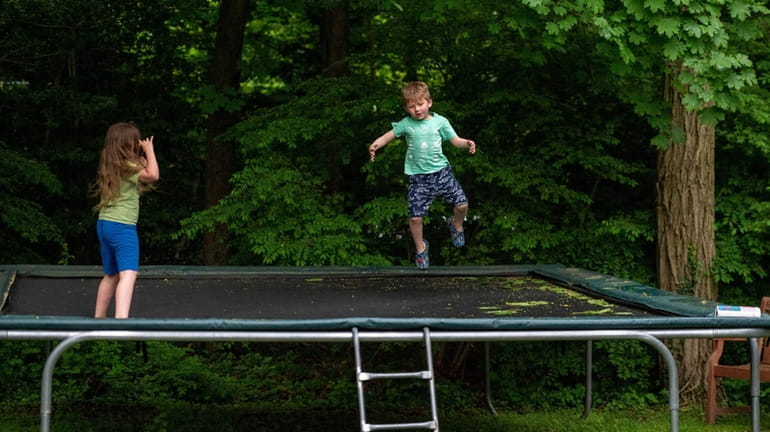Unhappy report for our young people shows we must relearn how to let kids be kids

Growing up, playing taught us a lot about cooperation, negotiation, decision-making, and resiliency. Credit: Howard Simmons
When we were kids, it seemed like we were always outdoors. There was a band of boys my age and we had a routine. One would go the back door of another's house, call out, “Hey, Jackie,” or Eddie or Gordon, wait for that kid to come out, then move on to the back door of the next friend's house.
We'd play touch football in the street or someone's yard, basketball wherever there was a hoop, explore the woods across the street from my house, and engage in blocks-long games of team tag in which people who were touched were “locked” in a jail — often, a tree or someone's garage — and liberated if and when a teammate could touch them.
We moved by foot and bicycle, played on the same youth league basketball team, and pretty much hung together until the end of sixth grade. We learned a lot about cooperation, negotiation, decision-making, and resiliency while we were more or less on our own in the neighborhood with no adult supervision. And while we had to deal with the usual teen insecurities that followed — how to fit in at high school, peer pressure, social anxiety — I like to think we had a good grounding to be able to take them a little more in stride.
I've often thought about those days when I consider the comparatively empty streets of Long Island. I really honed in on those times when the annual World Happiness Report was released this past week.
The headline was that the United States had slipped out of the top 20 for the first time, settling in at 23rd of the 143 countries measured. But there were more ominous findings in the details.
For the first time, the report broke down its findings by age group. Our nation was 10th in the world in happiness among those 60 and older, but for our young people under 30, we ranked 62nd. In that gap lies a lot of angst.
This report is no outlier. Disturbing data is everywhere.
- Teens are more than twice as likely as adults (19.5% to 8.8%) to say they had a major episode of depression in the last year, according to the National Survey on Drug Use and Health; the two groups were nearly equal in 2010.
- The percentage of high school girls who seriously considered suicide jumped by more than half, from 19% in 2011 to 30% in 2021, according to the Centers for Disease Control and Prevention.
- For kids ages 10-14, the suicide rate tripled between 2007 and 2021, says the CDC.
- For adolescents in general, depression and anxiety were stable in the 2000s, then spiked by more than 50% between 2010 and 2019, according to NYU social psychologist Jonathan Haidt, who is out this week with a new book, “The Anxious Generation: How the Great Rewiring of Childhood Is Causing an Epidemic of Mental Illness.”
Looking at the time frames above, you'll notice they largely track with a particular epoch of human history: the rise of the smartphone and social media. Haidt is among many studying young people who say that staring at little screens is a big problem for human development. And he sees that transition — from what he calls “play-based” to “phone-based” childhoods — as the root of the problem.
I'm no social psychologist but this resonates — as do Haidt's solutions: No smartphones until high school. No social media before age 16. Make schools phone-free zones. And give kids more free play in and out of school.
The school stuff we can do, if we have the will. But as much as I'd love to see kids back out in the street, as important as it would be to do that, it's not the same world as it was back when. Still, we have to try.
We have to let kids be kids. Their lives depend on it.
Columnist Michael Dobie's opinions are his own.

